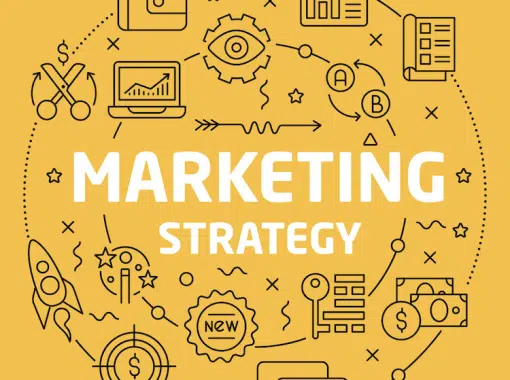
In the old days, businesses would hire large sales forces to bombard prospects with cold calls and pitches. Businesses would purchase prospect lists in bulk from a handful of vendors and hope for the best.
The digital age brought with it a revolution in marketing that led to businesses gaining control over the top of the funnel. Inbound marketing emerged from a disparate set of marketing tactics, including content marketing, search engine advertising, and the proliferation of effective email marketing solutions.
In this guide, you will learn more about how inbound marketing can benefit your business.
Table of Contents
- Higher Quality Leads
- Cost Effectiveness
- Brand Affinity
- Improved Customer Retention
- Higher Quality Web Traffic
- More Detailed Analytics
- Creation of Brand Advocates
- Improved Email List Engagement
- Enhanced Search Engine Optimization
- Positioning Your Brand as a Thought Leader
Read on for how inbound marketing can transform your business and how your business can implement these strategies today!
1. Higher Quality Leads
With a traditional outbound sales approach, your sales team will make calls to a large database of prospects.
This approach has several problems, including inefficiency, lack of prospect targeting, and the large expense of hiring, training, and paying a large sales team of cold callers.
With inbound marketing, your company structures whitepapers, blog posts, and other informational resources to attract prospects. This approach brings relevant and high-quality leads directly to your sales team.
Often, when comparing the effectiveness of the inbound and outbound marketing approaches, businesses can see a significant lift in marketing-qualified and sales-qualified leads.
2. Cost Effectiveness
The most comprehensive method to measure cost-effectiveness involves calculating the fully loaded acquisition cost of a new customer, also known as “fully-loaded customer acquisition cost (CAC).”
Calculating this value for an outbound-centric approach involves aggregating all sales team salaries, bonus compensation, and benefits, along with supporting management and IT systems.
As an example, if your company has 25 sales team members making an average of $75,000 in total compensation, the starting point for calculating CAC is $1,875,000.
With additional costs such as rehiring, training, and management, plus the enterprise software required to operate this team, you may spend nearly $3 million per year to operate a large outbound team.
Inbound marketing, on the other hand, may require only a handful of sales personnel coupled with a small marketing team. The total cost of compensation comes in significantly lower, and the remaining savings can help to build up a large base of content and advertisements.
3. Brand Affinity
Inbound marketing can help your business to develop brand affinity by appearing in media channels that your customer base already subscribes to.
Additionally, inbound tactics such as content marketing, thought leadership, and search engine advertising could all play a role in shaping how your customers view your brand.
These opportunities do not necessarily exist with a cold-calling outbound sales approach.
4. Improved Customer Retention
Inbound marketing extends beyond the initial acquisition of a new customer. Content marketing, one of the key disciplines of inbound marketing, can help you nurture an interested list of customers who use your products.
These efforts can help retain your customer base with more frequent touchpoints and high-value resources they will appreciate.
5. Higher Quality Web Traffic
The combination of search engine optimization (SEO) and search engine marketing (SEM), both of which fall under the inbound umbrella, can help your business to acquire web traffic that has a higher chance of converting into paying customers.
In fact, inbound marketing offers one of the only ways in which businesses can acquire this type of traffic without pouring enormous resources into broad advertising campaigns.
6. More Detailed Analytics
With a cold calling outbound approach, businesses will not have the ability to collect valuable analytics about their prospects.
Since inbound marketing turns the acquisition flow around and generates web traffic, businesses can identify patterns and trends that they would otherwise not have access to.
7. Creation of Brand Advocates
Traditionally, businesses would employ major celebrity figures and other well-known personalities to promote their products.
While this approach still has merit, most customers have grown skeptical of celebrity endorsements.
The answer to this challenge revolves around turning the everyday customer into a “brand advocate.”
Inbound marketing tactics can help you identify your most loyal customers and offer them incentives to popularize your brand. These tactics can include the creation of user groups, the use of email marketing to promote incentives, and identifying popular review platforms on which to deploy advocates.
8. Improved Email List Engagement
By providing valuable content and resources to your prospects and customer email lists, you can further cement goodwill and create sales opportunities further down the line.
Companies that pursue an inbound strategy often find that they have a significant uptick in both open rates and click-through rates from their email marketing campaigns.
9. Enhanced Search Engine Optimization (SEO)
High rankings on search engine result pages can bring businesses highly-qualified web traffic that has a chance of converting into valuable long-term customers.
By focusing your business on an inbound marketing strategy, you can unlock this important source of traffic while building brand equity.
SEO has gone through many changes over the years, and major search engine networks continue to upgrade their algorithms. By creating quality, reader-centric content, your business can enjoy the benefits that come from high rankings.
10. Positioning Your Brand as a Thought Leader
When your prospects and customers think of your business, what words do you want them to associate it with?
If you want to focus on the long run, creating associations between your brand and thought leadership could help to create a lasting business that can handle changes in your industry and difficult economic times.
By publishing high-quality content, appearing at major conferences, and building a reputation for knowledge among your customer base, your business can become a thought leader and the go-to solution for your product category.
Get Started with Inbound Marketing Today
To get started with inbound marketing, you will want to develop these functional areas in your business:
- Content Production: A team of content producers can help to position your business as the thought leader in your industry.
- Market Intelligence: By knowing what your prospects and customers think about your market, you can develop custom-tailored promotional strategies.
- Media Buying: Whether in-house or via an agency, media buying can help your business to amplify its content across major online and offline media networks.
- Sales Enablement: A team of sales enablement specialists can help your sales force to engage more effectively with your prospects and customers.
Wrapping It Up: Why Inbound Outcompetes Outbound
In summary, inbound marketing is a customer-centric approach to marketing that focuses on building long-term relationships with customers.
It provides numerous benefits, including generating high-quality leads, increasing website traffic, improving customer retention, and establishing thought leadership.
By implementing an inbound marketing strategy, you can build a loyal customer base and grow your business over time.











